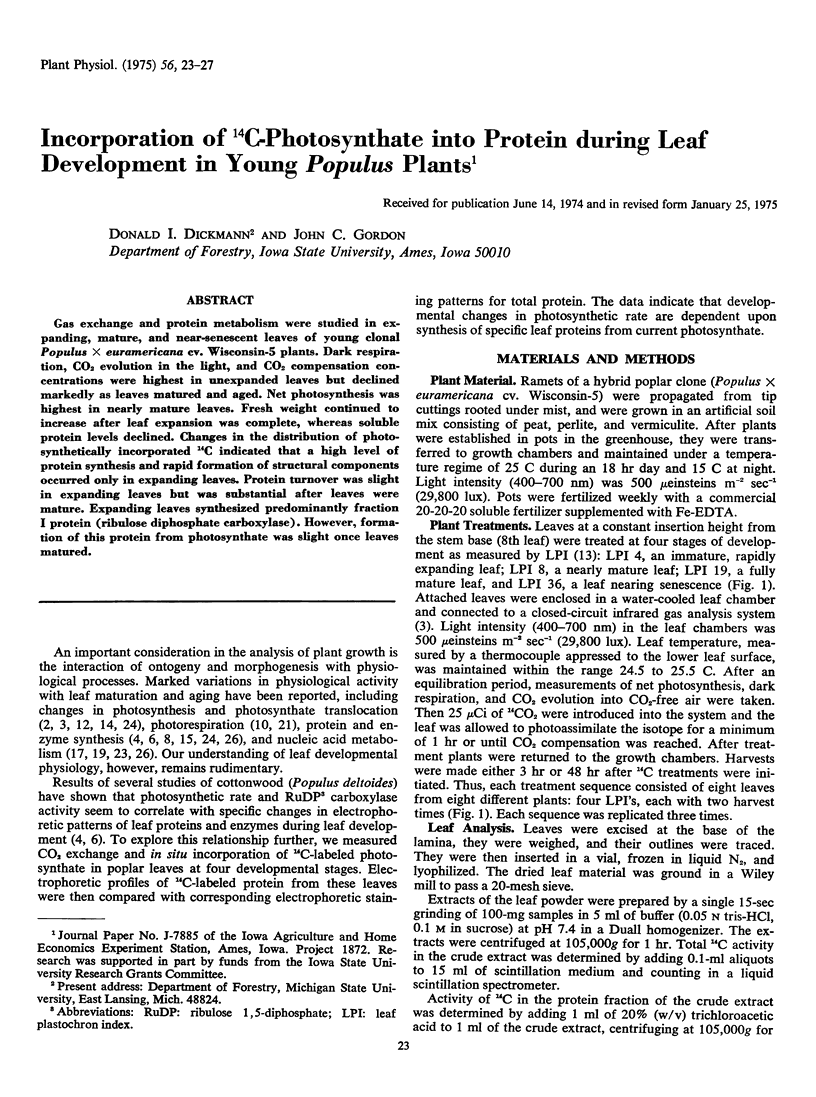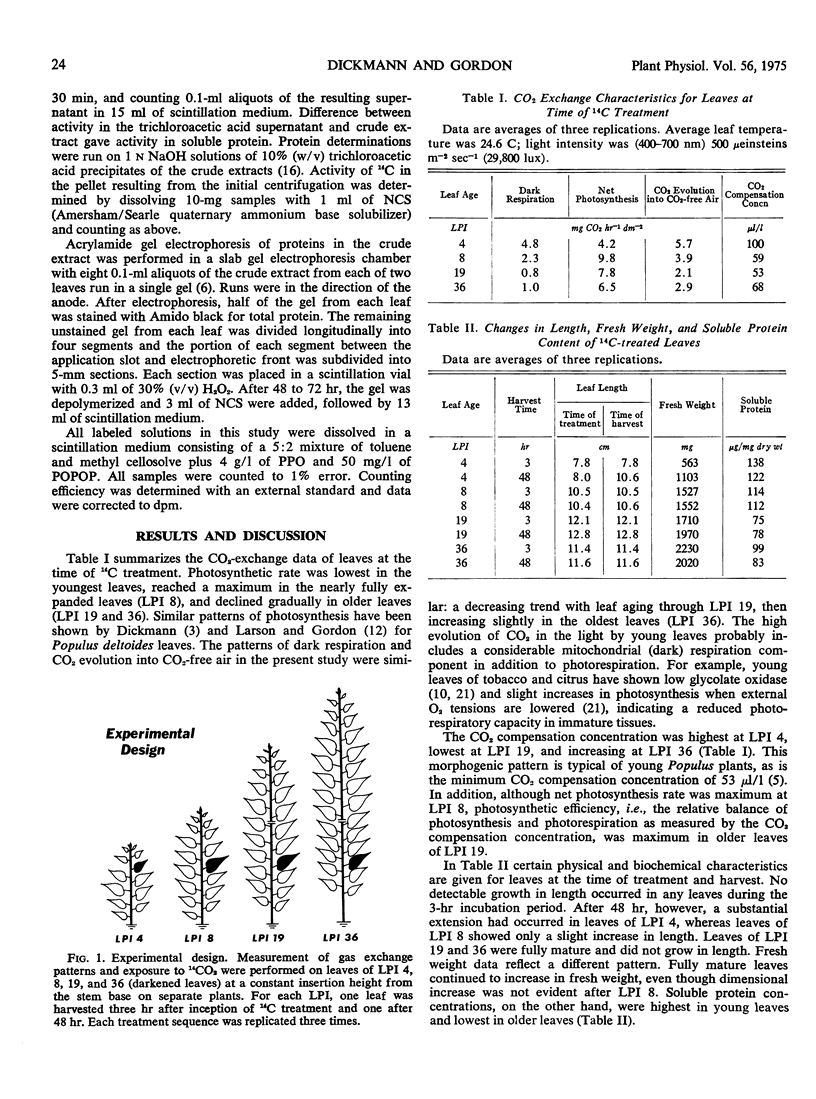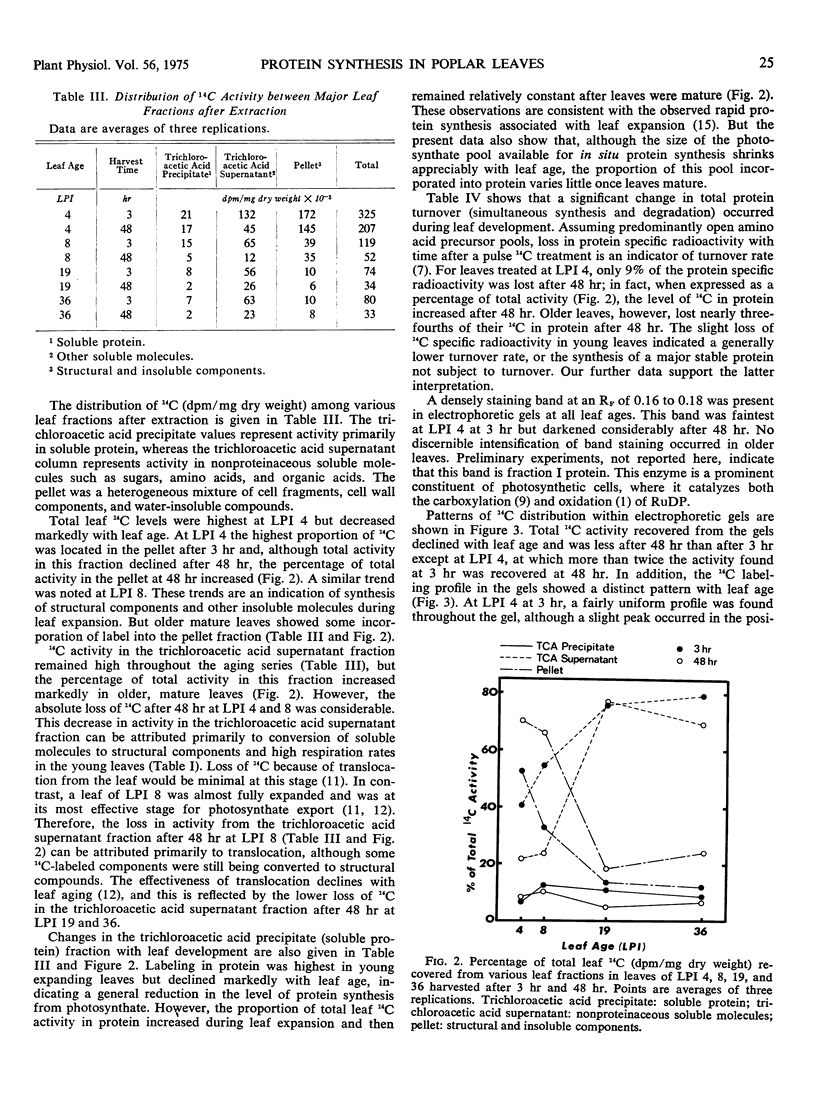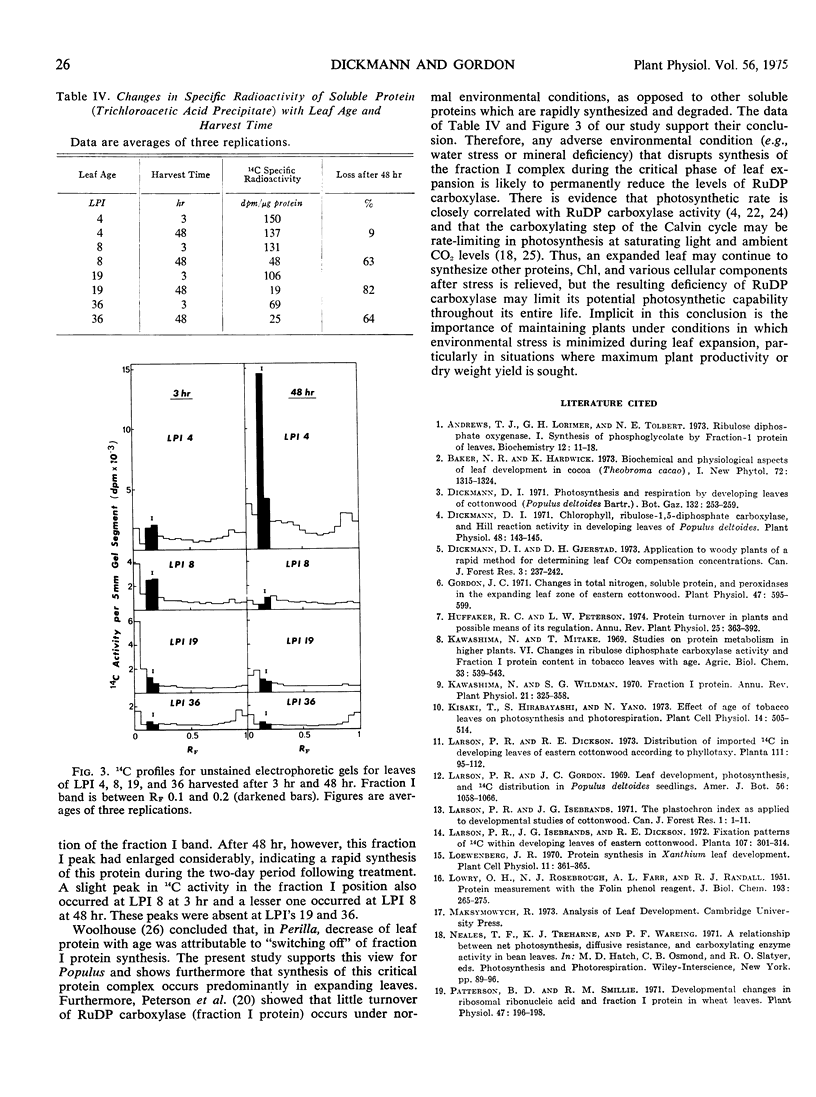Abstract
Gas exchange and protein metabolism were studied in expanding, mature, and near-senescent leaves of young clonal Populus × euramericana cv. Wisconsin-5 plants. Dark respiration, CO2 evolution in the light, and CO2 compensation concentrations were highest in unexpanded leaves but declined markedly as leaves matured and aged. Net photosynthesis was highest in nearly mature leaves. Fresh weight continued to increase after leaf expansion was complete, whereas soluble protein levels declined. Changes in the distribution of photosynthetically incorporated 14C indicated that a high level of protein synthesis and rapid formation of structural components occurred only in expanding leaves. Protein turnover was slight in expanding leaves but was substantial after leaves were mature. Expanding leaves synthesized predominantly fraction I protein (ribulose diphosphate carboxylase). However, formation of this protein from photosynthate was slight once leaves matured.
Full text
PDF




Selected References
These references are in PubMed. This may not be the complete list of references from this article.
- Andrews T. J., Lorimer G. H., Tolbert N. E. Ribulose diphosphate oxygenase. I. Synthesis of phosphoglycolate by fraction-1 protein of leaves. Biochemistry. 1973 Jan 2;12(1):11–18. doi: 10.1021/bi00725a003. [DOI] [PubMed] [Google Scholar]
- Dickmann D. I. Chlorophyll, Ribulose-1,5-diphosphate Carboxylase, and Hill Reaction Activity in Developing Leaves of Populus deltoides. Plant Physiol. 1971 Aug;48(2):143–145. doi: 10.1104/pp.48.2.143. [DOI] [PMC free article] [PubMed] [Google Scholar]
- Gordon J. C. Changes in total nitrogen, soluble protein, and peroxidases in the expanding leaf zone of eastern cottonwood. Plant Physiol. 1971 May;47(5):595–599. doi: 10.1104/pp.47.5.595. [DOI] [PMC free article] [PubMed] [Google Scholar]
- LOWRY O. H., ROSEBROUGH N. J., FARR A. L., RANDALL R. J. Protein measurement with the Folin phenol reagent. J Biol Chem. 1951 Nov;193(1):265–275. [PubMed] [Google Scholar]
- Peterson L. W., Kleinkopf G. E., Huffaker R. C. Evidence for lack of turnover of ribulose 1,5-diphosphate carboxylase in barley leaves. Plant Physiol. 1973 Jun;51(6):1042–1045. doi: 10.1104/pp.51.6.1042. [DOI] [PMC free article] [PubMed] [Google Scholar]
- Salin M. L., Homann P. H. Changes of photorespiratory activity with leaf age. Plant Physiol. 1971 Aug;48(2):193–196. doi: 10.1104/pp.48.2.193. [DOI] [PMC free article] [PubMed] [Google Scholar]
- Smillie R. M., Fuller R. C. Ribulose 1,5-Diphosphate Carboxylase Activity in Relation to Photosynthesis by Intact Leaves And Isolated Chloroplasts. Plant Physiol. 1959 Nov;34(6):651–656. doi: 10.1104/pp.34.6.651. [DOI] [PMC free article] [PubMed] [Google Scholar]
- Wareing P. F., Khalifa M. M., Treharne K. J. Rate-limiting processes in photosynthesis at saturating light intensities. Nature. 1968 Nov 2;220(5166):453–457. doi: 10.1038/220453a0. [DOI] [PubMed] [Google Scholar]
- Woolhouse H. W. The nature of senescence in plants. Symp Soc Exp Biol. 1967;21:179–213. [PubMed] [Google Scholar]


